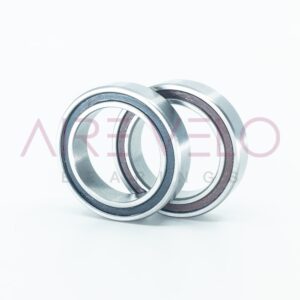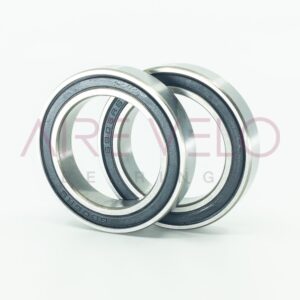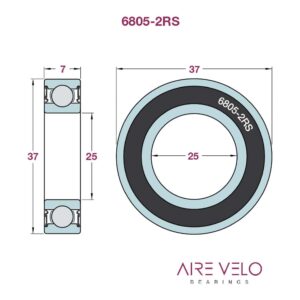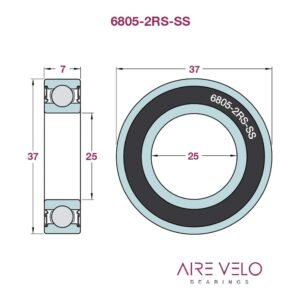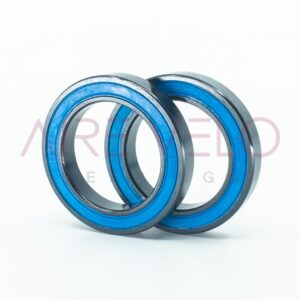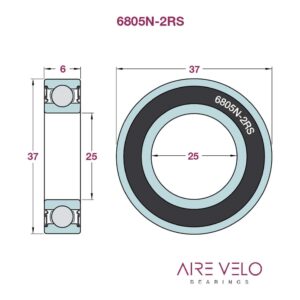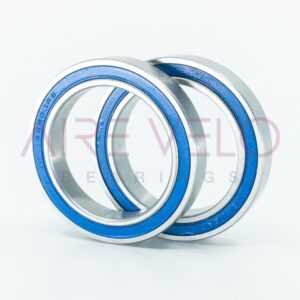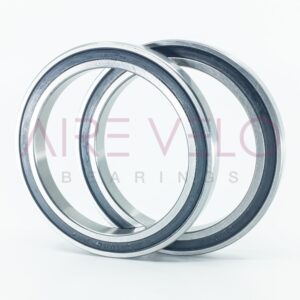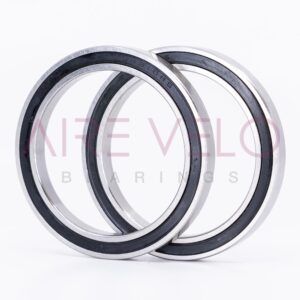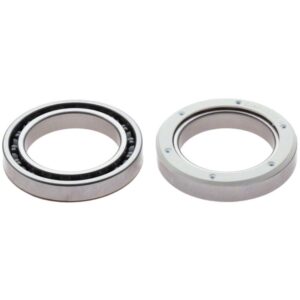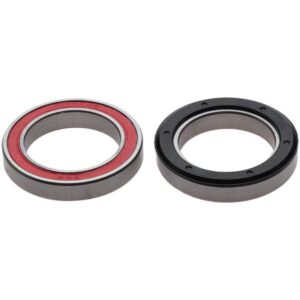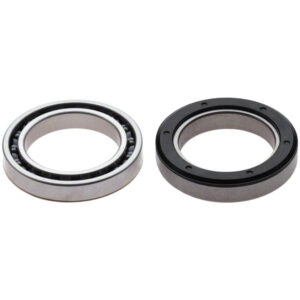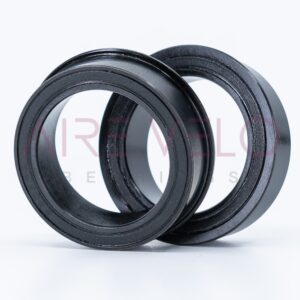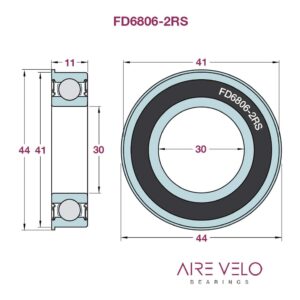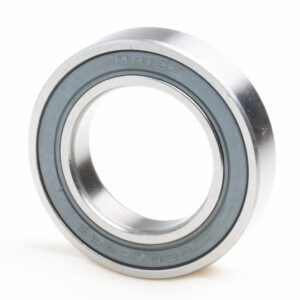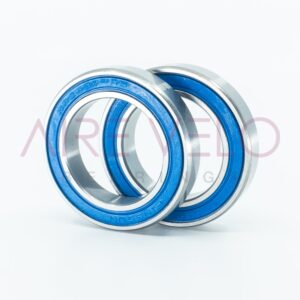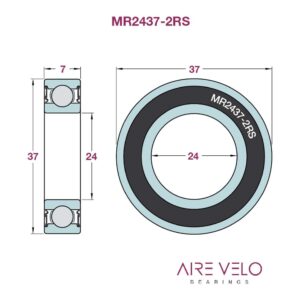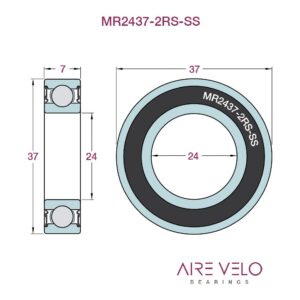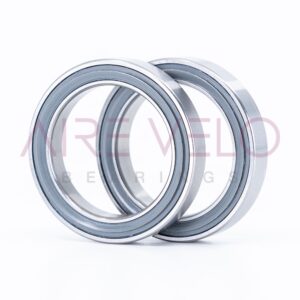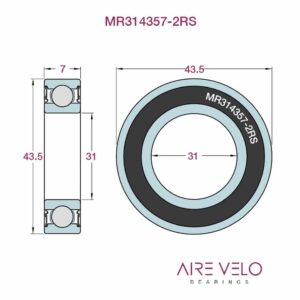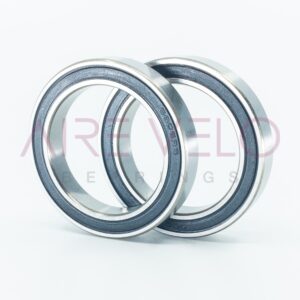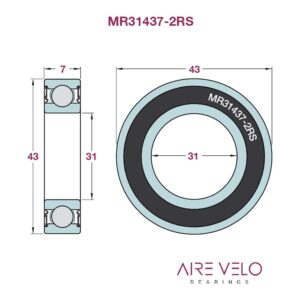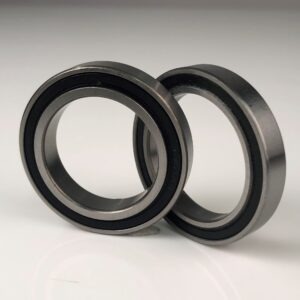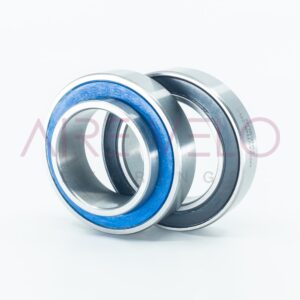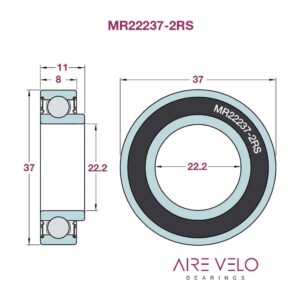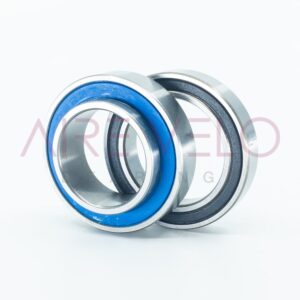Same Day Shipping, orders before 4pm**
What Is a Bottom Bracket Bearing Kit?
A bottom bracket bearing kit includes the key parts needed to replace the bearings in your bike’s bottom bracket system. Most kits contain a pair of sealed bearings, relevant spacers or covers, and instructions or technical details to assist with correct installation.
These bearings sit inside the bracket shell and support the crankset spindle. As you pedal, they keep the crank arms rotating freely and efficiently. Choosing the right bearing kit ensures compatibility with your bike’s bottom bracket standard and helps prevent creaking, stiffness, or early wear.
How Do I Choose the Right Bottom Bracket Bearings?
To choose the correct bottom bracket bearings, you need to know your frame’s bracket shell type, width, and the crankset axle diameter. Road bikes typically use 68mm or 70mm bracket shells, while mountain bikes may use 73mm or 86.5mm shells, especially on press fit systems.
If your bike uses a threaded bottom bracket, we supply sealed cartridge bearing kits compatible with square taper, Octalink, ISIS, and external systems like Hollowtech II or GXP. If your bike uses a press fit bottom bracket, we offer kits for standards such as BB86, BB92, and PF30, with bearings that sit directly inside the frame.
Not sure what you need? Check the engraved code on your current bearing or measure the inner and outer diameter along with the width. You can also use our online bearing search tool or contact our team for personalised advice.
What Types of Bottom Brackets Do You Support?
We supply bottom bracket bearing kits for all major systems, including:
- Press fit bottom brackets, where the bearing cups are pressed directly into the frame's bracket shell.
- Threaded bottom brackets, where the cartridge bearing unit screws into the frame.
- External bearing bottom brackets, where the bearing sits outside the shell to allow for larger spindle diameters.
- Cup and cone bearing replacements, for older or classic bicycles still using loose ball bearings.
No matter your bike’s age, spec, or usage — we’ve got you covered with the right bearing to match.
What Materials Are Available?
Our bottom bracket bearings are available in a choice of materials depending on performance needs and riding conditions.
Steel bearings are a solid, reliable option for general use. Stainless steel bearings offer increased resistance to moisture and corrosion, making them ideal for winter or off-road riding. Hybrid ceramic bearings provide the lowest rolling resistance and longest lifespan, perfect for competitive cyclists or high-mileage riders.
All bearing kits are carefully manufactured to high tolerances and come packaged for easy identification, safe storage, and proper installation.
Why Does the Bracket Shell Matter?
The bracket shell is the part of your bike frame that houses the bottom bracket bearings. It connects the seat tube, down tube, and chainstays, and plays a critical role in how your crankset fits and functions.
Shell width and diameter must be matched with the correct bearing type. A mismatch can lead to poor alignment, premature wear, or crankset failure. That’s why all our kits include exact measurements and guidance to help you find the correct product.
We support bracket shell sizes ranging from 68mm to 92mm and offer both press fit and threaded solutions for every frame type.
Why Order from Aire Velo Bearings?
We’ve been supplying bottom bracket bearings, headset bearings, and hub components to cyclists and bike mechanics for over three decades. We understand that even the smallest parts have a big impact on your ride, which is why we focus on quality, accuracy, and speed of delivery.
All of our bottom bracket bearing kits are in stock and ready to ship. We dispatch same-day on UK orders placed before 4PM and offer technical support for fitment, sizing, or compatibility questions. If you're not sure what you need, our team will help you get it right the first time.
You can also explore our full range of hub bottom bracket bearings to find the correct match for your bike.
Ready to Replace Your Bottom Bracket Bearings?
If you're hearing creaking from your crankset, feeling resistance while pedalling, or simply completing a routine service, it's time to check your bottom bracket bearings. Replacing them with the right bracket bearing kit will restore smooth performance and protect your drivetrain for the long term. You can browse and order from our full selection online, with fast UK delivery and easy-to-navigate product pages. Each bearing kit is clearly marked with its dimensions and compatibility, so you can shop with confidence. If you need help identifying your bearing size, matching your bracket shell, or checking crankset compatibility, contact us now. Our team is always happy to help, which is why we are also happy to accept returns from our customers to guarantee order satisfaction.
FAQs
How to Remove Bottom Bracket Bearings?
Inspect the threading and threaded bottom bracket bearing cups for tool fittings. There are many different designs and tool options. When you have the correct tool which is needed, insert the tool fully and remove the non-drive (left-side) cup by turning counterclockwise, holding the tool firmly to the cup. Removing an internal sleeve, it’s important to take note of any spacers under the cup for reassembly.
How to Replace/Change Bottom Bracket Bearings?
With your new/replacement bottom bracket, grease both parts of the tubes and threads using the paint brush. Apply enough grease so that the threads are evenly coated. Insert the bottom bracket from the drive side of the bike with the larger side facing your hand, and gently screw in the second set of threads on the other side with your fingers. Use the bottom bracket tool to screw in the larger side (drive side) of the bottom bracket, making sure to screw it in counterclockwise. Screw the threaded bottom bracket in all the way, but make sure not to tighten it down. Repeat for the smaller side, except screw the bottom bracket in clockwise, tighten both sides down with the bottom bracket tool. Put the cranks back on their corresponding sides, making sure the chain goes back around the chain ring, put the bolts back through, and tighten them into place with the allen wrench used earlier. Finally, rotate the pedals with your hands to check that the bottom bracket is rotating smoothly and not catching.
How do I know if my bottom bracket bearings are worn out?
You can usually tell if your bottom bracket bearings are worn out or if you can feel an obvious rumbling, creaking, grinding, or stiffness. This will tell you that the bearing is worn out and should be replaced. If your bottom bracket is severely corroded or worn out, you will be able to hear a grinding noise. For more information on this, check out our blog on What is the Bottom Bracket on a Bike now!
How Do I Know the Size of My Bottom Bracket?
The best way to find out the size of your bottom bracket bearing is to check for a code, if you can’t see a code you will need to measure the bearing. If you measure the inner, outer & width of the bearing you will be able to identify it from that & you can input those dimensions in our handy search bar at the top of the site.
How long can a bottom bracket bearing last for?
We wouldn’t want to make a generalisation as to how long a bottom bracket can last for, this is because there are too many factors to consider including weather & the number of miles the bike has done etc. You can always speak to the expert team at Aire Velo if you need any further assistance.
How to remove sealed bearings from the bottom bracket?
More and more bikes now come with bottom bracket bearings that will push into the frame. Should your bottom bracket bearings have worn down, are damaged or corroded, you’ll need to remove them, these bottom bearings won’t be held in place by threads in the frame, they will be pushed into place and held by friction. Sometimes, this won’t work well and the bottom bracket bearings may creak, to fix this you can replace them and use a thread locked to hold them in place.
Can bottom bracket bearings rattle?
There are a number of reasons why your bottom bracket bearings may rattle, this usually indicates a problem with the bottom bracket itself. There are a range of things that you can do to check this, this includes pulling your cranks laterally and seeing if they move, you can also remove the chain from the chainings and give your cranks a spin, when you do this, listen for any unusual grinding noises or little clicks, you can also test this by holding the tube or seat tube down while spinning the crank then see if you can feel any grinding or vibration through the frame. Any of these points will indicate that you need to service or replace your bottom bracket.
What bottom bracket do I have?
In order to find out the size of the bottom brackets that you need, make sure that you measure inside of the bottom bracket shell in your frame, it will be either 73mm, 70mm or 68mm. Some older frames may come with threaded bottom brackets instead.
What Is a Bracket Shell on a Bike?
The bracket shell is the hollow part of your bike frame where the bottom bracket fits. It's located at the junction between the seat tube, down tube, and chainstays, and it houses the bearings that allow your crankset to rotate. Bracket shells come in different widths and diameters depending on your bike’s design. Common sizes include 68mm, 73mm, and 86.5mm widths, and they can be either threaded or press fit. Knowing your bracket shell size and type is essential when choosing the right bottom bracket bearing kit.
If you're unsure about your shell dimensions or bottom bracket standard, measure the inside width of the frame or check for any manufacturer markings. You can also contact us for help selecting the correct bearing for your setup.

